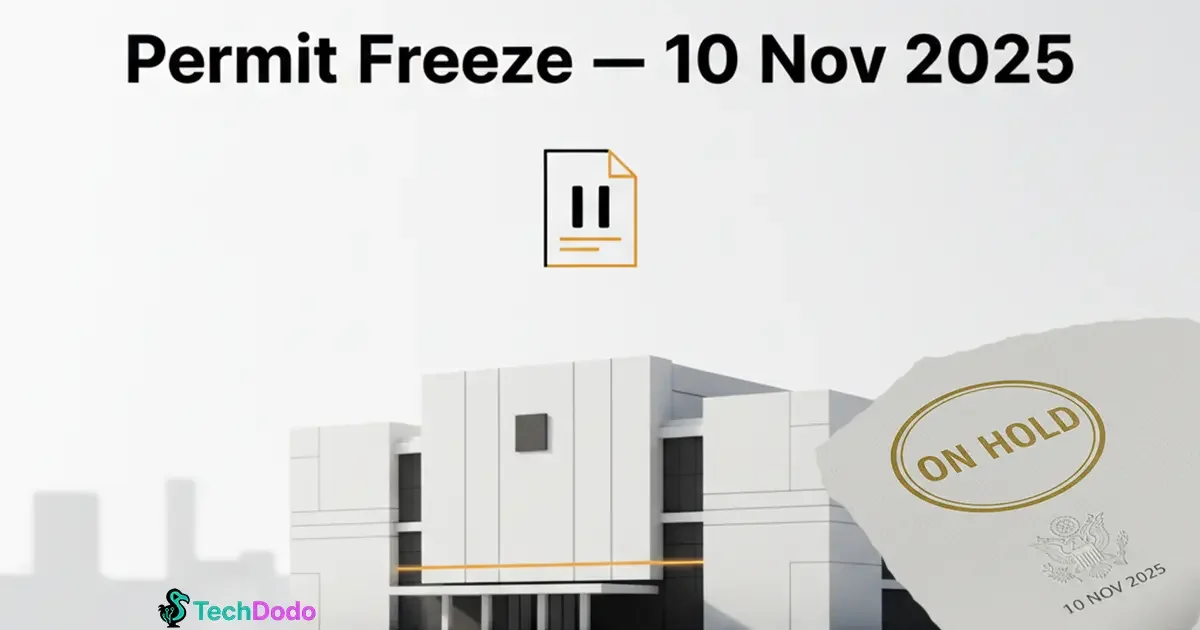Telecom Permit Freeze from 10 Nov: What India’s New Authorisation Era Means
If you’ve been lining up a new ISP, MVNO, or satcom entry—hit pause. From 10 November 2025 (IST), India’s Department of Telecommunications (DoT) will stop accepting new telecom permit applications until it notifies the authorisation framework under the Telecommunications Act, 2023. Existing applications filed on or before that date will continue to be processed; everything else must wait for the new regime.
Why the freeze—and why now?
This is not a crackdown; it’s housekeeping before a big rules change. The 2023 Act shifts India from the old “licence” mindset to a more streamlined authorisation model. DoT floated draft authorisation rules in September 2025 and has been collecting feedback. A short freeze avoids contradictions between the old licence templates and the soon-to-be-notified authorisation terms.
Per the government note, the pause covers Unified Licence (UL), UL (VNO), standalone licences, registrations, permissions and No-Objection Certificates (NoCs). The freeze starts 10.11.2025 and lasts until the authorisation framework is notified. Applications already submitted by that date will still move forward.
What changes under the Telecommunications Act, 2023?
At a high level, the Act simplifies how entities can offer telecom services—shifting to authorisations with specific terms/conditions, fees and compliance laid out under the Act and ensuing rules. TRAI has spent much of 2025 recommending the terms and conditions of network authorisations, which will underpin how services operate in practice.
In plain English: instead of negotiations buried in bespoke licence letters, expect clearer, standardised conditions notified under the Act—easier to read, harder to misinterpret, and (ideally) faster to administer. Industry, unsurprisingly, wants the transition to preserve contractual clarity they had in legacy licence agreements. Expect some push-and-pull here as final rules land.
Who is affected in India?
- ISPs (Class A/B/C under UL), MVNOs, ILD/NLD hopefuls, satcom entrants, enterprise connectivity providers—anyone who was planning to file fresh post-10 Nov. You’ll wait for the authorisation window to open.
- Applicants who filed on or before 10 Nov 2025—your files continue to be processed. Keep responding to DoT queries on time.
- Existing licensees—you don’t stop operating. As per the Act’s design, migration to authorisation is expected on renewal or as notified—details to be finalised in the framework.
India-specific implications (near term)
- Startups & MSMEs: If you were eyeing a niche access network, private LTE/5G via VNO, or small-town fibre rollouts, factor in application timing risk. Budget for a waiting period until the new rules go live—timeline not disclosed as of IST.
- Satcom: LEO/MEO plans that require fresh permits will time-shift to the authorisation regime—watch how satellite categories are carved out in the final rules.
- MVNOs: The move could actually simplify entry once notified, but mind the gap between freeze and notification for fundraising/go-to-market.
- Fiber & RoW: Separate Right-of-Way rules continue to evolve; this freeze doesn’t halt civil permissions. Keep RoW projects moving if they’re tied to existing licences.
What you should do now (practical steps)
- Filed already? Track your SR numbers and respond quickly to any compliance queries—processing continues.
- Missed the cut-off? Prepare for the new templates: assemble shareholding charts, net-worth proofs, technical plans, lawful interception readiness, and cyber-security SOPs so you can file on day one of the authorisation window. Cross-check against TRAI’s February 2025 recommendations for likely conditions.
- Policy watch: Keep an eye on DoT’s eServices portal and official press releases/X handle for the notification. Don’t rely on third-party summaries alone.
Pros and cons (for market entrants)
Upside
- Cleaner, standardised authorisation terms could reduce ambiguity and speed up approvals.
- Potentially broader participation (easier for new categories like IoT connectivity or enterprise networks).
Downside
- Temporary freeze delays new launches and fundraising milestones; uncertainty persists until the notification drops.
- Some operators worry about loss of negotiated certainty embedded in legacy licence letters.
Risks/Unknowns
- Exact go-live date for authorisations: not disclosed as of 27 Oct 2025 (IST).
- Granularity of service categories/fees under authorisation: draft direction is public, but final shapes may shift based on feedback.
- Interplay with new telecom cyber requirements: several draft rule changes are in flux—watch integration timelines.
India’s telecom is trading one layer of paperwork for another that’s (hopefully) clearer and faster. In the short term: a filing chill. In the medium term: a cleaner rulebook that could widen the playing field—if the details land right.
